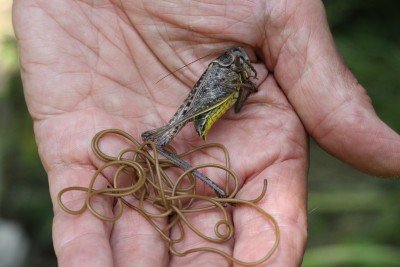
Imagine wolf worms as tiny vampires of the insect world. They latch onto their host—usually young animals like mice or rabbits—and can impact their health significantly. So, you might be wondering: Could these critters potentially reduce the populations of your favorite backyard wildlife? Let’s explore this topic a bit more, shall we?
What Are Wolf Worms?
Wolf worms, scientifically known as *Cuterebra*, belong to a family of flies. While the name might sound menacing, these insects are relatively harmless to humans. They thrive in wooded areas and grassy environments, which makes your backyard the perfect habitat. The female wolf fly lays its eggs near potential hosts, typically small mammals. Once hatchlings emerge, they attach themselves to the host and start feeding on it. This is where the story gets interesting!
You might be wondering how they actually affect their hosts. Well, wolf worms can cause significant stress and health issues. They can lead to infections and, in some cases, even death if the host is heavily infested. Imagine a young rabbit, struggling to find food because it’s weakened by these parasites. In the grand scheme of things, this can have ripple effects in your local wildlife population.
How Do Wolf Worms Impact Wildlife Populations?
Now, let’s unpack how exactly wolf worms can influence the number of animals in your backyard. Even though wolf worms do target specific hosts, their impact can be far-reaching. When an animal becomes infested, it may struggle to survive or reproduce, limiting the overall population.
Here are some of the ways wolf worms can affect wildlife:
- Health Decline: Infected animals may experience weakness, leaving them vulnerable to predators.
- Reduced Reproduction: Weak hosts are less likely to mate and raise young, leading to fewer offspring.
- Change in Behavior: Infestation can alter an animal’s behavior, making it less active and more cautious.
So, if wolf worms are affecting these animals, what happens to them? Well, fewer rabbits and mice can mean less food for predators like hawks and foxes, creating an imbalance in the food web.
The Life Cycle of Wolf Worms
To understand their impact better, let’s take a closer look at the life cycle of wolf worms. It starts when a female lays eggs near the burrows or nests of potential hosts. As the eggs hatch, newly emerged larvae attach to the skin of the host animal. They burrow into the flesh, where they will grow and feed on the host’s nutrients.
Throughout their development, wolf worms can cause serious damage. They create holes in the skin, leading to infections and other complications. Honestly, it’s quite a gruesome process for the host! Once they are fully developed, they emerge from the host, ready to become adult flies and continue the cycle.
This life cycle explains why they can have such a profound impact on wildlife populations. The unfortunate truth is that while adult wolf flies may not be directly harmful to other wildlife, their larvae can significantly reduce the numbers of small mammals in your backyard.
Signs of Wolf Worm Infestations
If you’re concerned about wolf worms in your backyard, recognizing the signs of infestation can help you stay ahead of any issues. Infected animals might show various symptoms. Here are a few to look out for:
- Visible Lesions: Look for swollen, inflamed areas on the skin.
- Behavior Changes: Infected animals may become less social or hide more often.
- Difficulty Moving: Look for signs of weakness or difficulty in locomotion.
If you see these signs, it’s a good idea to keep a close eye on the wildlife in your area. While you might not be able to treat these infestations yourself, understanding the situation is essential for monitoring wildlife health.
What Can You Do to Help Backyard Wildlife?
You might be feeling a bit helpless after learning about wolf worms and their impact on wildlife. But not to worry! There are ways you can help. Here’s what you can do to support your backyard ecosystem:
- Create Safe Spaces: Provide habitats where small mammals can find shelter and food.
- Limit Pesticides: Avoid using harmful chemicals that could weaken wildlife or disrupt their habitats.
- Monitor Wildlife: Keep an eye on the animal population, noting any changes that may occur.
By taking these steps, you can help create a more balanced ecosystem, allowing wildlife to thrive despite the presence of wolf worms.
Alternatives to Harmful Practices
Sometimes, people look for quick solutions to control wildlife populations, like traps or poisons. However, these methods can backfire and harm beneficial species. Instead of resorting to these measures, consider companion planting or using natural repellents to deter unwanted pests without harming the ecosystem.
For example, planting mint or marigolds can naturally keep some pests away while attracting beneficial insects. These plants can create a haven for wildlife while also helping to discourage wolf worms and other pests from settling in your yard.
Final Thoughts: Balancing Nature in Your Backyard
In summary, while wolf worms might seem like a minor concern, they can have large effects on wildlife populations. Their life cycle and impact on host animals highlight the intricate balance of ecosystems. Remember, everything is connected. By supporting your local wildlife and creating a healthy environment, you can contribute to a thriving backyard ecosystem, even in the face of challenges like wolf worms. So, next time you’re out enjoying your garden, take a moment to appreciate the balance of nature and the role you play in it. Happy gardening!
